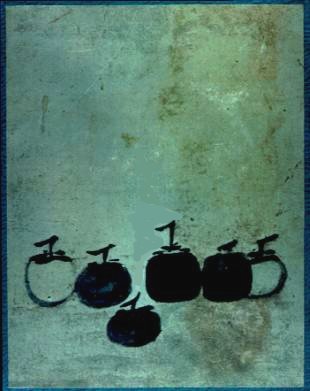Facts About Six Persimmons
The painting "Six Persimmons" is a stunning piece of 13th-century Chinese art, created by the monk Muqi Fachang during the Song dynasty. Muqi was renowned for his mastery of the spontaneous style of Chinese painting, and this work truly epitomizes his talent.
"Six Persimmons" depicts, as its name suggests, six persimmons seemingly floating against a subtly textured background, all rendered in blue-black ink on paper. The painting's remarkable quality lies in Muqi's delicate and skillful brushstrokes, especially in the shaping of the persimmons and the detailing of their stems and leaves. The overall effect creates a beautiful contrast and a sense of weightlessness, making the persimmons appear to float.
This masterpiece has garnered much admiration over the centuries. Professor James Cahill from the University of California, Berkeley, was so captivated by it that he devoted an entire lecture to its artistic brilliance. The painting has even been described as "passion congealed into a stupendous calm" a testament to its powerful yet serene presence.
Today, "Six Persimmons" resides in the Juko'in subtemple of Daitoku-ji in Kyoto, Japan. However, it is rarely shown to the public, making any opportunity to see it in person a truly special experience.
